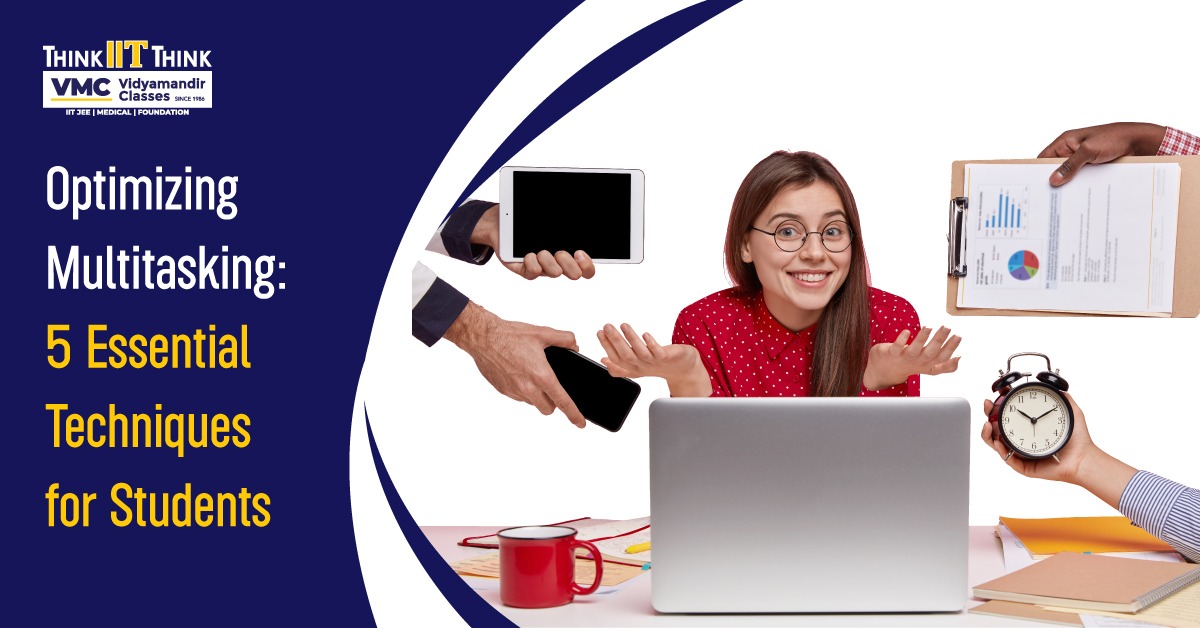Optimizing Multitasking: 5 Essential Techniques for Students
 Posted On
Posted On
143 total views, 1 views today
In today’s fast-paced world, students often find themselves juggling multiple responsibilities—be it academics, extracurricular activities, or personal commitments. Gaining proficiency in multitasking is essential to remaining organized without becoming overwhelmed. However, effective multitasking isn’t just about doing several things at once; it’s about optimizing your approach to ensure productivity and well-being. Here are five key techniques that can help students enhance their multitasking abilities.
1. Organize a Daily Agenda
The foundation of effective multitasking is organization. Begin each day by creating a detailed agenda. List all the tasks you need to accomplish, from assignments and study sessions to extracurricular activities and personal errands. To assist you in setting priorities, calculate the amount of time needed for each task. By having a clear roadmap for the day, you can allocate your time wisely and ensure that you’re not overloading yourself.
A well-structured agenda serves as a mental anchor, reducing the stress of trying to remember everything. It also helps you stay focused on what’s most important, making it easier to transition between tasks without losing momentum.
2. Bundle Similar Tasks
This technique, known as task batching, minimizes the mental effort required to switch between different types of activities. For example, if you need to read chapters from different textbooks, try to do all your reading in one session rather than spreading it throughout the day.
By grouping things together, you can lower your cognitive load and stay at a steady state of focus. This, in turn, boosts overall productivity, as your brain doesn’t have to constantly adapt to different types of tasks.
3. Share the Load
Realizing that you are not able to accomplish everything by yourself is crucial. Task delegation is essential to multitasking successfully. Work cooperatively with classmates or peers on projects, events, or exam preparation. Not only does sharing the workload reduce your stress level, but it also promotes group problem-solving and teamwork.
Delegation also teaches valuable skills in communication and leadership, which are crucial for both academic success and personal growth. By working together, you can accomplish more in less time, allowing everyone involved to benefit from the shared effort.
4. Schedule Breaks
While it might seem counterintuitive, taking regular breaks is vital for maintaining productivity during multitasking. Scheduling short, intentional breaks allows your mind to recharge, preventing burnout and improving focus when you return to your tasks.
Incorporating mindfulness practices, such as deep breathing exercises or meditation, during breaks can further enhance their effectiveness. These practices help clear your mind, reduce stress, and increase mental clarity, making it easier to tackle the next task on your agenda with renewed energy.
5. Establish a Routine and Persist
Consistency is key when it comes to mastering multitasking. Establishing a daily routine for recurring tasks helps build habits, making them second nature over time. When you follow a regular schedule, your brain learns to anticipate and prepare for specific tasks at certain times, reducing the mental effort required to initiate them.
Closing Thoughts
Multitasking, when done right, can significantly enhance a student’s ability to manage their workload efficiently. By organizing a daily agenda, bundling similar tasks, sharing the load, scheduling breaks, and establishing a routine, students can optimize their multitasking skills. These techniques not only improve productivity but also promote a healthier, more balanced approach to managing multiple responsibilities. Remember, the key to successful multitasking lies in practice and consistency—so start implementing these strategies today, and watch your productivity soar!




